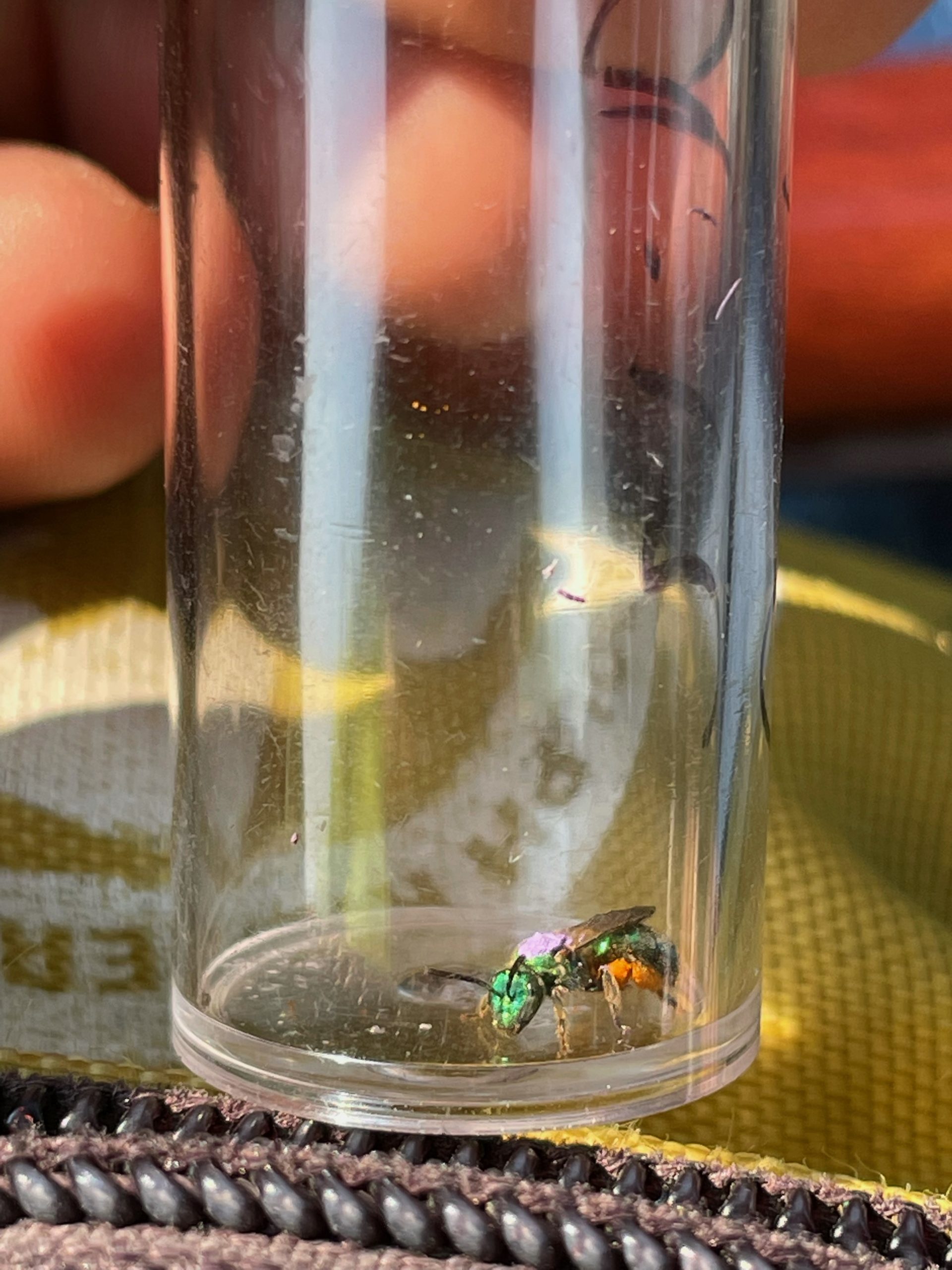This morning, Miyauna and I set out to visit some of the remnants in search of bees. We started our search at Woodys, and all of our good bee thoughts must have paid off because we found many bees foraging on the purple prairie clover scattered throughout the remnant. Here we ran some tests for the bee abundance portion of the insect project, namely testing out the methods for Miyauna’s mark and recapture study. We caught three Augochlorella auratas and one Halictus, set them in the cooler, and waited patiently for them to fall asleep. When they were asleep we were able to mark their backs with dabs of paint, which ideally would serve as indicators of previous captures. We soon discovered that the paint we used wasn’t ideal for the job, as the first bee we painted had no problem peeling the paint off of her thorax upon waking. We’re hoping a quicker drying paint may solve this problem. Fingers crossed!
We had some time to spare, so we checked out some other remnants to catch bees for my pollinator fidelity project. North railroad crossing and northwest landfill both yielded no bees, but we were able to catch one at golf course! As Echinacea progresses beyond peak flowering, bee sightings on heads are becoming increasingly rare.
During lunch we heard great presentations from both Amy, who discussed her plant isolation project, and Jared, who gave some summary statistics from the 361 hours the team has spent taking phenology data. Afterwords the team headed over to p7 and p9 to do some measuring of Echinacea angustifolia and Echinacea pallida hybrids. With such a great view of the lake, I didn’t even mind the heat!



Leave a Reply